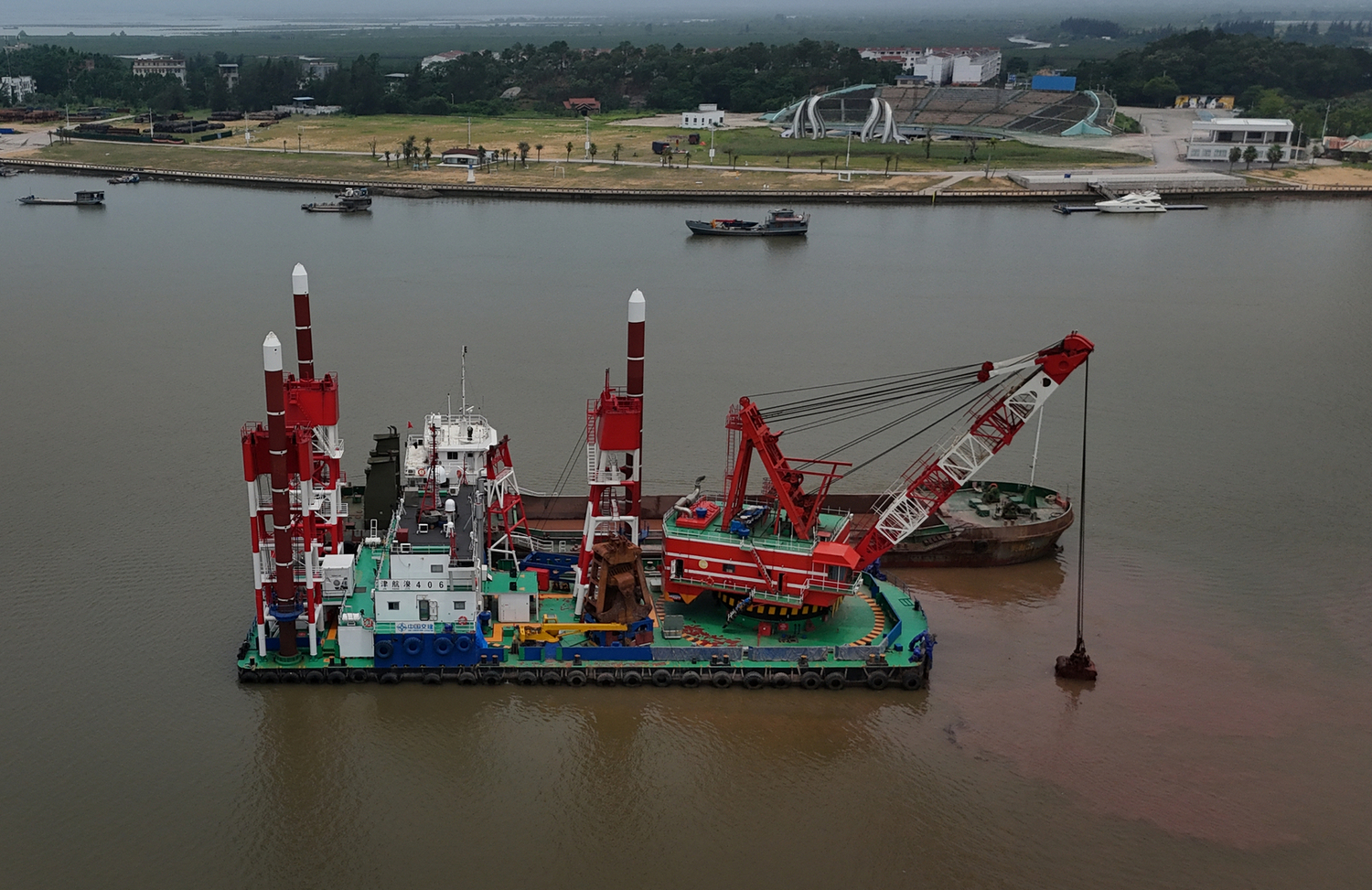Working principle of grab dredger
In port dredging and river management, dredging is one of the key steps. Grab dredging is widely used in river dredging projects due to its unique technical advantages. This article introduces the construction technology of grab dredger in detail.
1. Classification
Grab dredgers are divided into two types: self-propelled and non-self-propelled. Self-propelled dredgers are usually equipped with mud tanks, which are self-propelled to the mud discharge area when the mud tank is full; non-self-propelled dredgers use mud barges to load and unload mud.
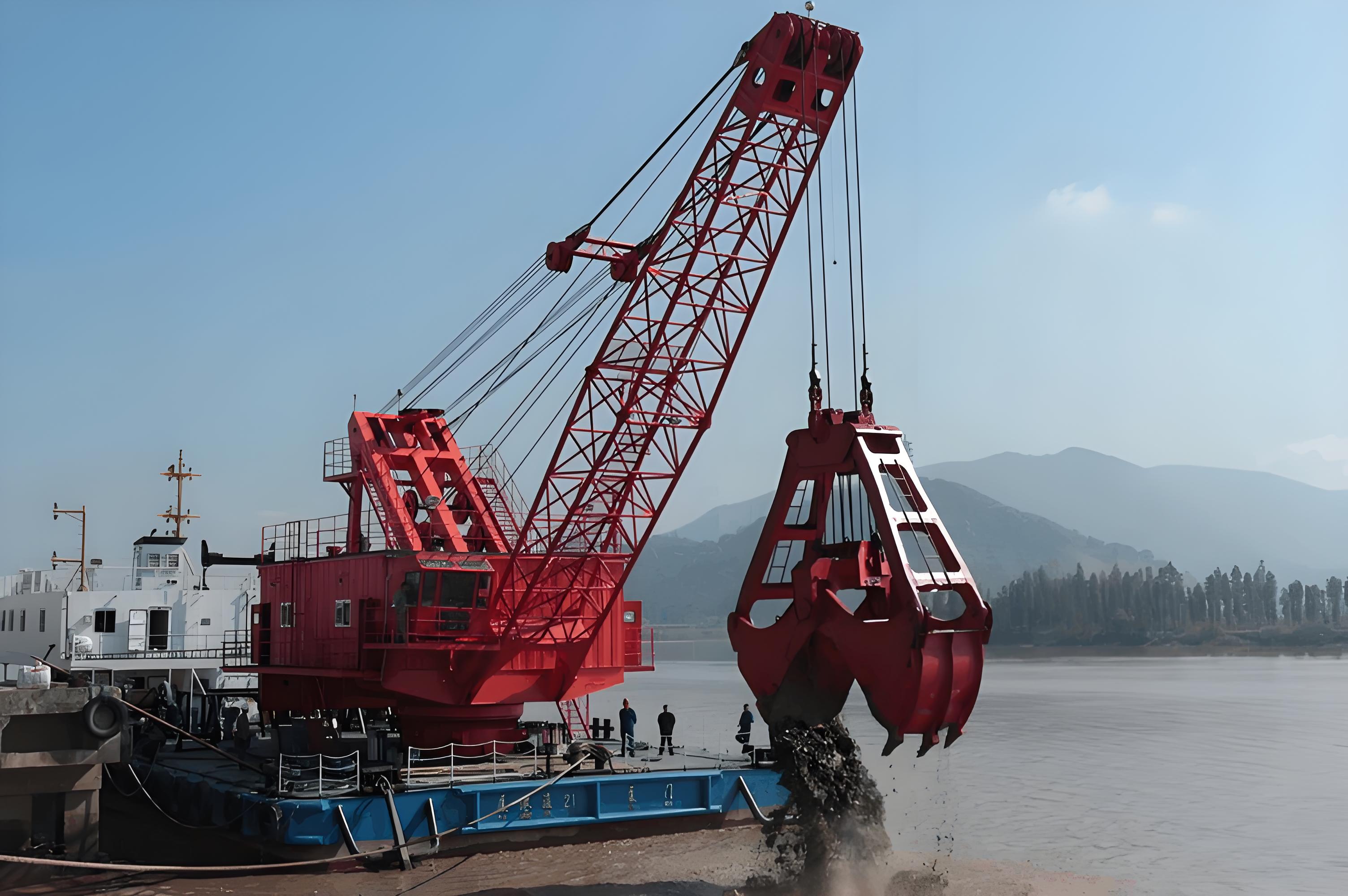
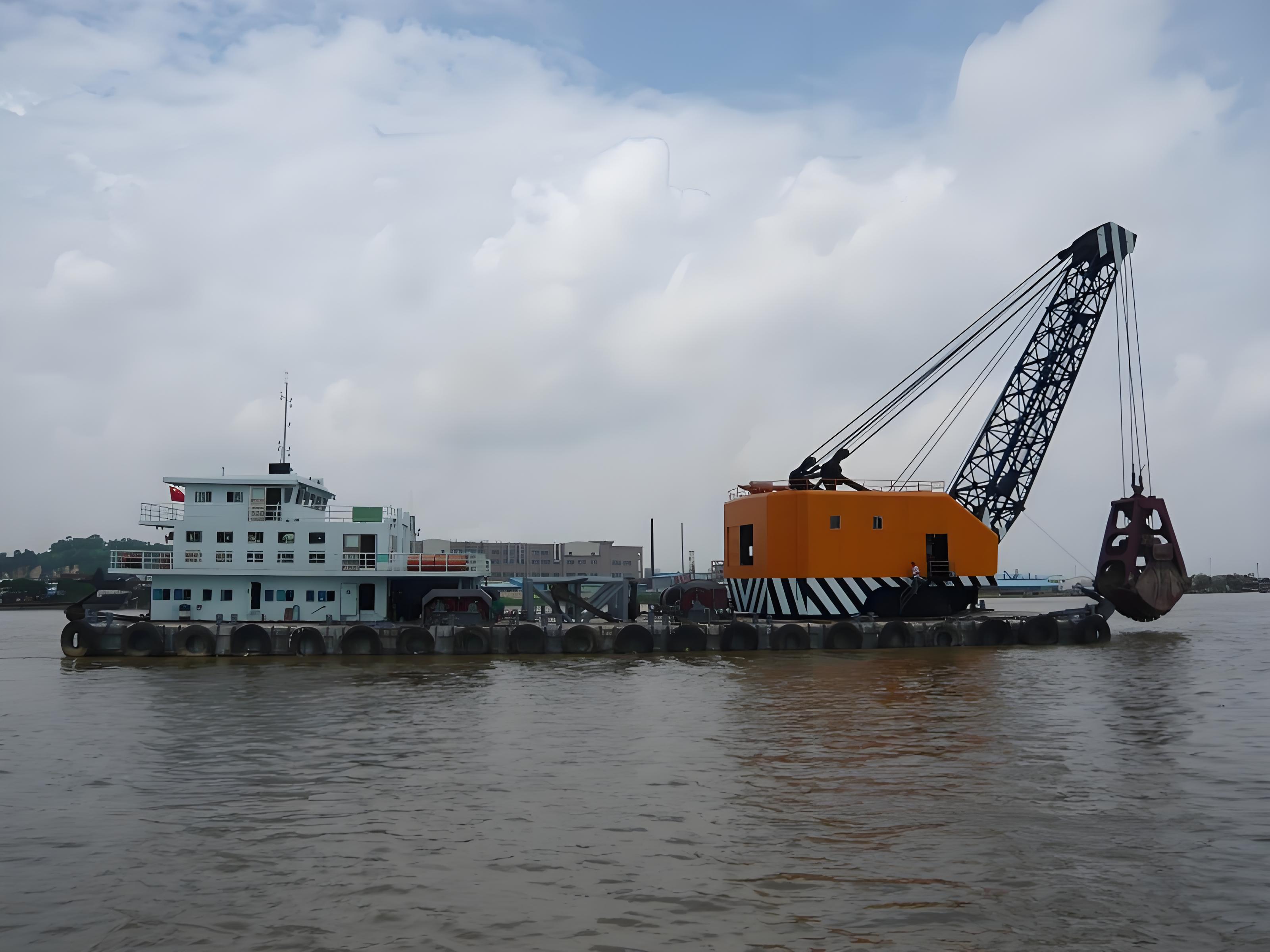
2. Structural composition
A grab dredger consists of a crane system, grab bucket, boom, ship-moving winch, and anchor cable.
The crane system serves as the dredger's primary power source, performing three functions: raising and lowering the grab bucket, opening and closing it, rotating it, and adjusting the boom's luffing.
Grab buckets are generally categorized by shape into two types: clamshell and orange segment.
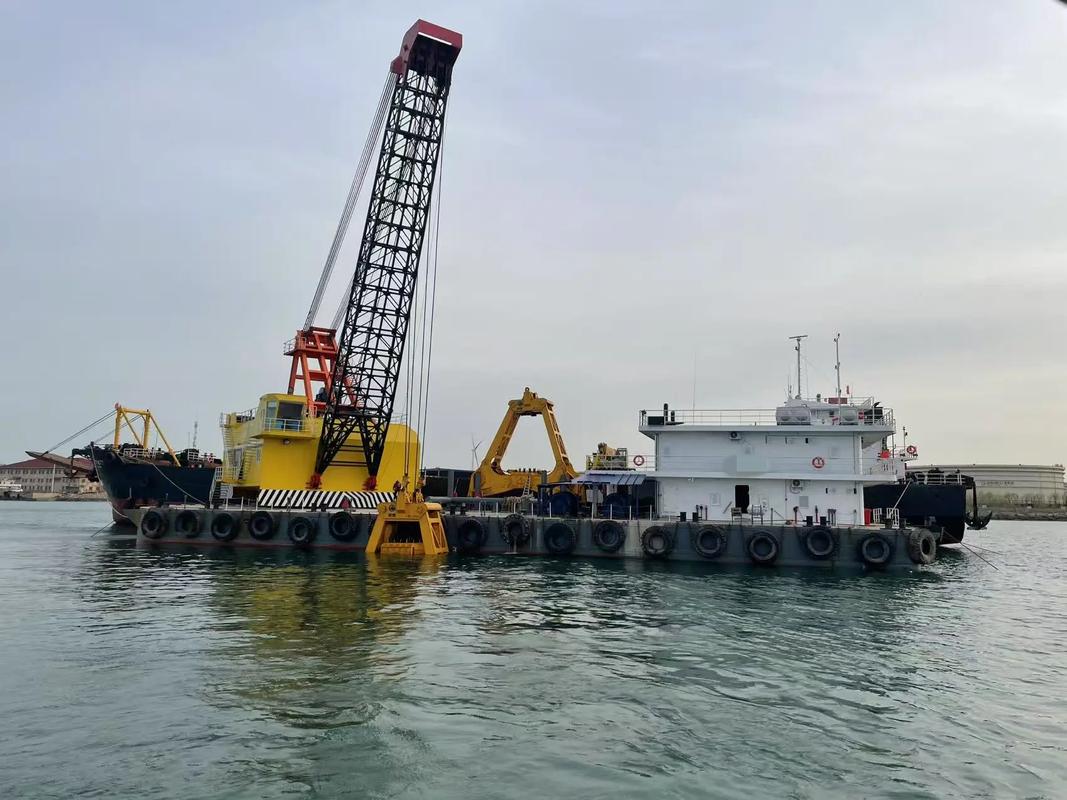
The boom is typically a truss or steel structure, supporting the grab bucket cables (opening, closing, and lifting). The boom rotates 360° with the crane's turntable platform and can be adjusted in amplitude. A tilt meter on the side of the boom controls the angle. For safety reasons, the boom pitch angle should not be excessively large; generally, a pitch angle of 45° to 57° is appropriate.
The function of the winch and anchor cable is to move the ship, position it and winch the barge. It is usually installed on the middle deck, on both sides or on the fore and aft decks. The winch is equipped with a cable drum and an anchor chain drum.
3. Working principle and advantages
Grab dredging mainly relies on grab dredgers for operation. The grab bucket is lowered into the water through a steel cable and inserted into the mud layer by gravity. After grabbing the mud and sand, it is lifted out of the water and unloaded into the mud tank or mud barge. The specific operation process is: plane positioning → determining the bucket depth → bucket excavation → lifting and rotating → loading on the barge → moving the ship to the next location for excavation after the excavation depth meets the requirements.
This technology has strong adaptability and can handle various complex water quality and geological conditions. It has the advantages of high flexibility and simple construction process.
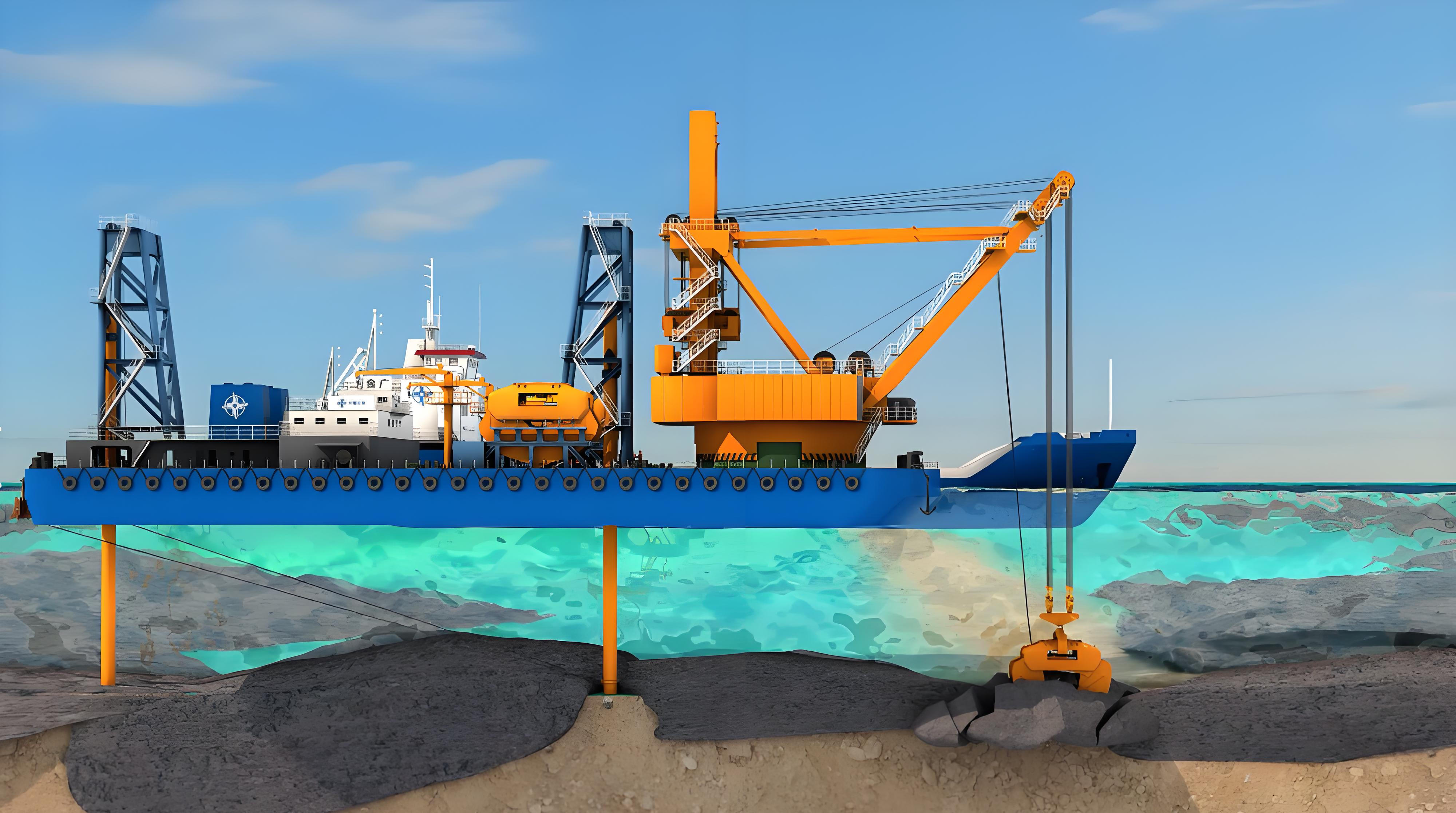
Grab dredgers can be equipped with a variety of grab buckets, including light, medium, and heavy-duty options, to accommodate dredging operations in soils of varying hardness. These dredgers offer a wide range of dredging applications, including silt with an underwater N value of less than 15, general clay, and loose sandy soils, as well as hard clay, rocky sandy soil, and gravel with an N value of 25-40.
The grab dredger can also meet the needs of different excavation depths during construction by changing the length of the grab bucket's lifting and opening and closing cables.
In addition, compared with other types of dredgers, grab dredgers have simpler equipment, fewer wearing parts of dredging machinery, and the cost of the ship is also lower.
4. Work Shortcomings
However, grab dredging also has some drawbacks during construction.
First, dredging efficiency is relatively low. Only a certain amount of silt can be captured each time, and the silt removal rate is typically only around 30%. This requires repeated operations for large-scale dredging, which is time-consuming.
Second, it is insensitive to soft sediments, easily removing the harder layers below the riverbed while allowing surface sediment to leak, compromising dredging effectiveness and the stability of the riverbed structure.
Third, dredging can easily disturb the bottom sediment, causing floating sediment to return to the water, affecting water quality and causing secondary pollution to the ecological environment. Leakage is also inevitable, impacting the river's flood-carrying capacity and water quality improvement efforts.
Fourth, silt handling is difficult, requiring complex processes such as dehydration and solidification, resulting in high transportation costs.
